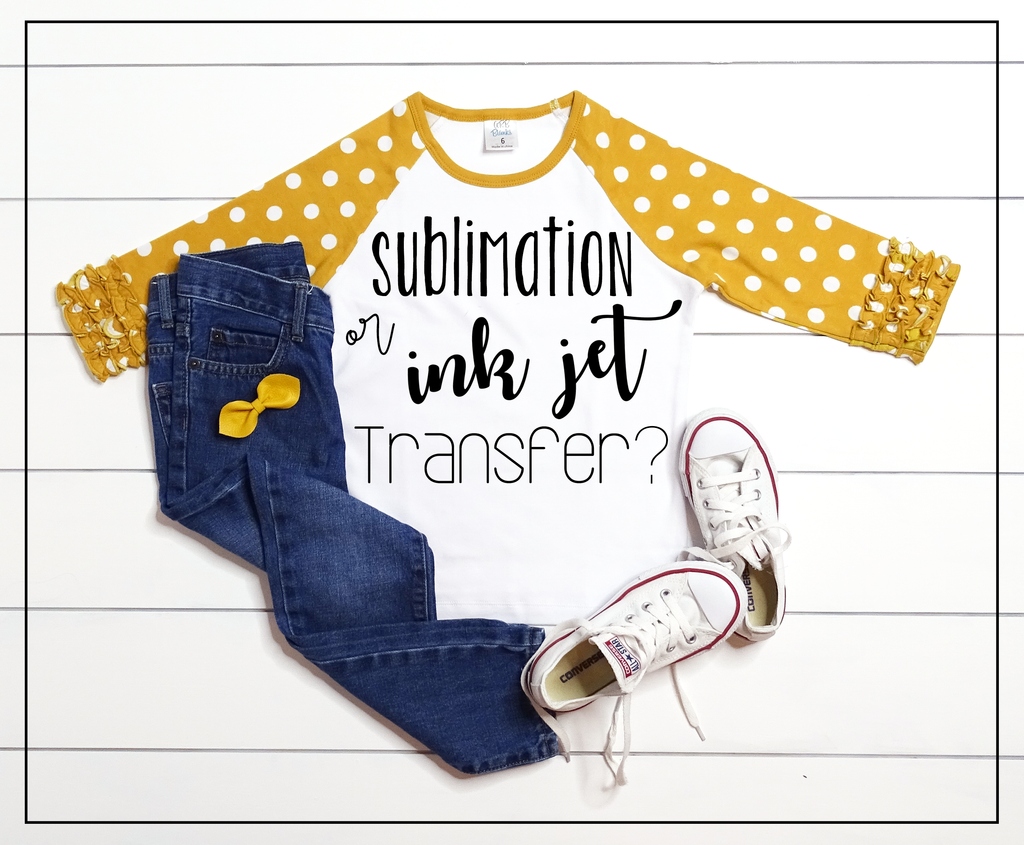What's the Difference Between Ink Jet Transfers & Sublimation?

Yes, there is a difference between ink jet transfers and sublimation! These terms often get intermingled and leave some to believe they are the same thing when they actually are not. Though they do have similar processes, the materials, durability, expenses, etc. differ from each other.
Similarities: Both ink jet transfers and sublimation have the same basic 2 step process. You will print your design on a special type of paper and then press that design onto a garment using a heat press.
Differences: You'll use different kind of printer ink for each, different types of "special paper", different start-up costs, different feel of design once pressed, different durability, and different kind of garment materials will be used.
So, What is Ink Jet Transfer?
Ink Jet Transfers is using by printing on specialty paper using an ink jet printer. Once printed, you will use a heat press to transfer the image that is on the paper to your garment. What is left on the shirt is your design and the transfer paper that sits on top of the garment, adding a touchable layer.
Pros:
- very low start-up cost, the lowest in t-shirt making
- easiest process with less troubleshooting
- can use on cotton or synthetic blends
- can use on white, light, or dark colored garments (no restrictions to color)
Cons:
- not as long of durability since the design is more of a layer on the fabric
- can feel the transferred layer with your hand
- limited to pressing on fabrics
- will need to use 2 different types of paper for using on "whites" and using on "darks/colored" fabric
What is Sublimation?
Sublimation is a process where the special sublimation ink from your printer is the only thing that will be transferred to your garment, unlike ink jet transfers where the transfer paper layer will also transfer. Sublimation goes through a molecular change where the ink will permanently become part of the fibers of the garment, so that you can't feel the ink once transferred and increases durability to last as long as the garment it self.
Pros:
- longest durability
- no touchable change to the garment
- can be used on other hard materials with a poly-coasting such as mugs, jewelry, mousepads, etc.
- vibrant colors
- lower start up cost if you convert a printer to sublimation yourself
Cons:
- higher start up cost if you buy a sublimation printer straight out
- regular maintenance of the ink to keep it from getting clogged
- can be used on white and light colored fabrics only. (There is a bleaching technique that will allow you to use darker colored fabrics)
- restricted on types of fabrics you can use: 100% polyester is the best; poly-cotton blends can be used but won't have the best results
I hope this information clears up a lot of confusion and helps you better decide which route is personally the best for you! For the smaller business who will just be focusing on making t-shirts (especially for kids) or for the crafty mom, I recommend starting with ink jet transfers. It's cheaper to start and easier to move up to sublimation if you so desire!
Please leave any comments or questions below! I'd love to hear your thoughts or answer any questions you may have!
Happy Pressing, Friends!
Tori

I currently own 2 kinds of paper one of them is my computer paper which is Hp BrightWhite 24 for ink jet. The other is Sublimination Paper, the biggest question I have what paper should I use for my Circut Mug Press when transferring?
Thanks so much for the information. It clears up some questions I had about the sublimation